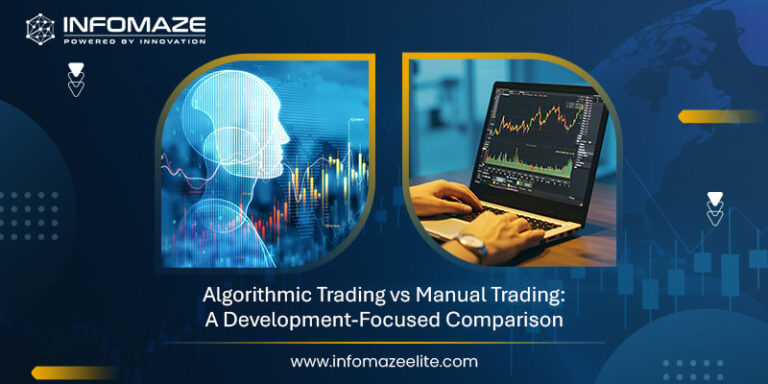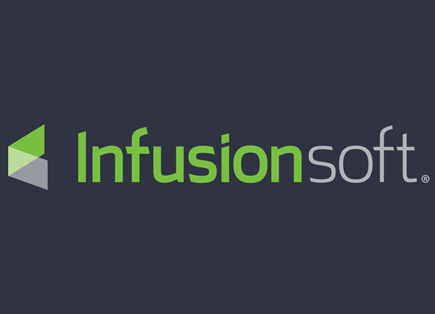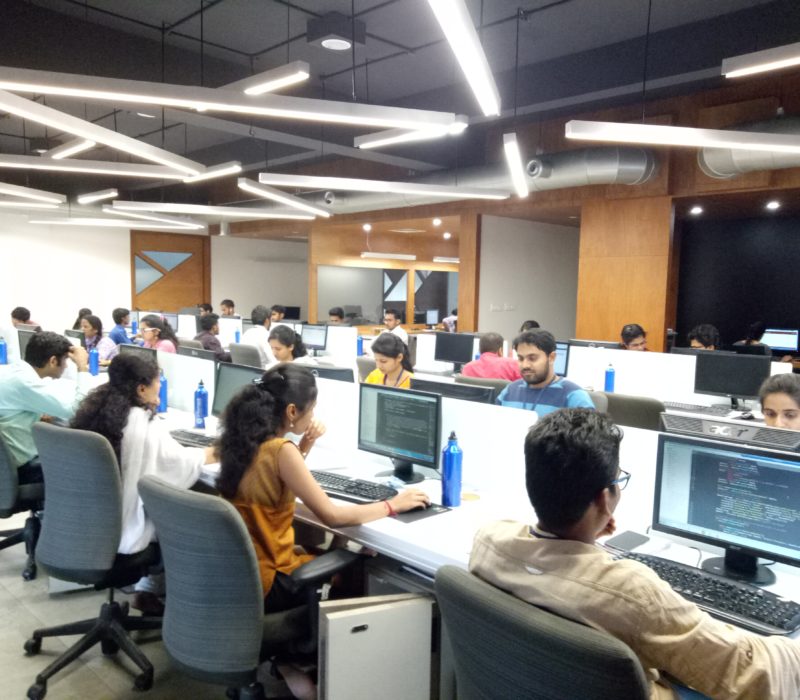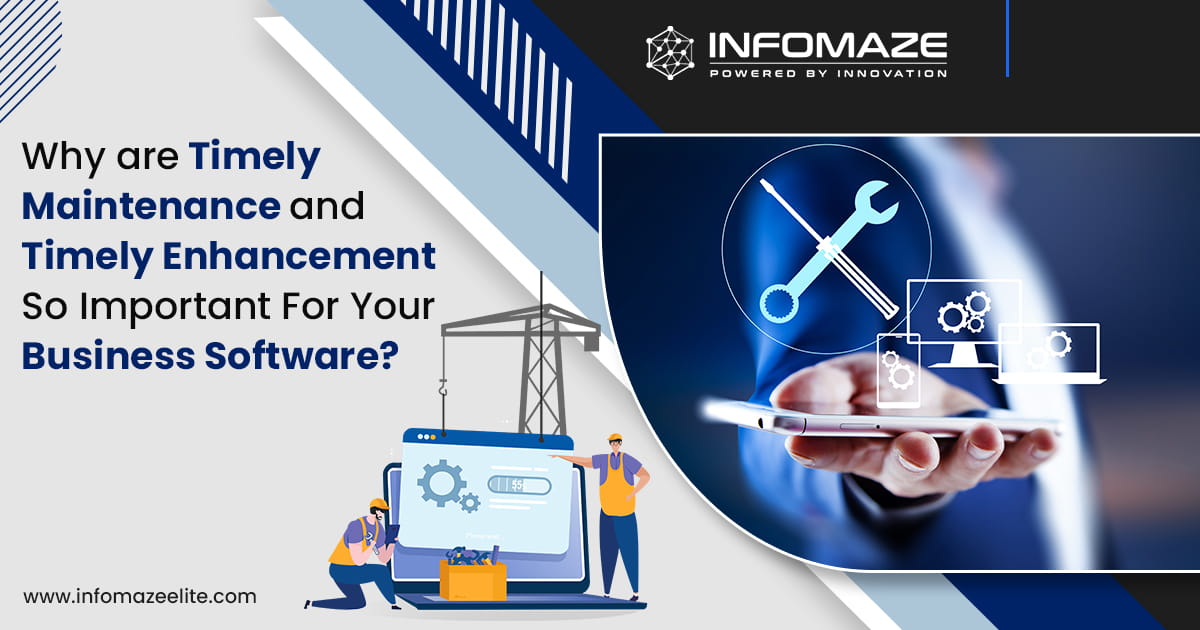Key Differences and Benefits of Manual vs Algorithmic Trading
Technology has transformed the way financial markets operate. What was once dominated by traders making decisions on gut instinct and real-time observation has now shifted towards data-driven, automated systems.
So, the choice between manual trading vs automated trading is no longer just about style or preference but it is about understanding how technology shapes execution, risk and strategy.
For developers and fintech firms, the debate is not just which method is better but about how to design systems that combine the strengths of both. While manual trading expands on human intuition and adaptability, algorithmic trading brings speed, scale and consistency. Together, they represent two sides of a trading ecosystem that can be blended with the right technical solutions.
What Is Manual Trading?
Manual trading is the traditional method where every decision including entry, exit and risk management is made directly by the trader. This involves monitoring charts, reading market news and responding in real time.
For example, a swing trader might analyze candlestick patterns, confirm signals with fresh news, and then place an order by hand. The advantage here is flexibility which a trader can quickly adapt to sudden events or shifts in sentiment.
From a development standpoint, manual trading is enhanced when supported by tools and platforms that provide real-time analytics, alerts and visualization, allowing traders to remain in control while still benefiting from technology.
What Is Algorithmic Trading?
Algorithmic trading (or automated trading) uses computer programs to execute trades based on predefined rules. These rules can involve technical indicators, price levels or timing conditions. Once programmed, algorithms can scan multiple markets simultaneously and act at speeds humans cannot achieve.
In practice, large financial institutions use advanced systems for high-frequency trading executing thousands of trades in milliseconds, while retail traders may automate simpler strategies like moving average crossovers.
Behind the scenes, algorithmic trading is not just about writing rules. It requires a robust technical foundation.
Algo software developers build systems using programming languages such as Python, C++, or Java. These systems must integrate seamlessly with broker APIs or FIX protocols to place trades.
Development Advantages of Algorithmic Trading

API & Broker Integration :
This ensures smooth connectivity with multiple exchanges and brokers, enabling seamless automated execution.
Low-Latency Infrastructure :
Optimized systems minimize delays, allowing trades to execute in microseconds—crucial for high-frequency trading.
Backtesting Engines :
Algo software developers create frameworks to test strategies against years of historical data, reducing risks before going live.
Risk Management Modules :
Automated stop-losses, exposure controls, and compliance checks provide consistency and stability.
Scalability :
Well-designed platforms can handle multiple markets and asset classes simultaneously, something impossible with manual trading.
Adaptive Systems :
By integrating AI and machine learning, developers can make algorithms more flexible, capable of adjusting to changing market conditions.
Algorithmic Trading vs Manual Trading: A Development-Focused Comparison
When comparing algorithmic trading vs manual trading, the differences extend beyond execution. They represent two distinct philosophies: manual trading emphasizes adaptability and human intuition, while algorithmic trading delivers precision and efficiency.
Speed and Execution
Manual trading relies on human reaction, often taking seconds or minutes to place an order. In volatile markets, that delay can mean missing opportunities. Algorithms, on the other hand, execute thousands of trades in microseconds which make them essential for high-frequency or short-term strategies. For long-term investors, however, this speed may not be as critical.
Decision-Making and Emotions
Manual traders use intuition and can factor in unstructured data such as breaking news or political events. But this advantage also introduces emotional bias—fear, greed, or hesitation. Algorithms remove emotions entirely, following predefined logic with absolute consistency, even under stressful conditions.

Flexibility and Adaptability
A key strength of manual trading is the ability to adjust instantly to unexpected events like central bank announcements or geopolitical shifts. Algorithms are limited to their programming. Unless equipped with adaptive AI models, they struggle to respond to scenarios outside their coded logic.
Resources and Cost
Manual trading is accessible, requiring only a brokerage account and the trader’s time. Algorithmic trading involves higher upfront costs for software, data feeds, and sometimes infrastructure. However, once built, automated systems can run continuously, handle multiple markets, and scale more efficiently than manual methods.
Risk Management and Stability
Manual traders rely on discipline for risk control, which can falter under stress. Algorithmic platforms enforce structured risk management through automated stop-losses and exposure limits. Developers can backtest strategies across years of historical data, reducing unexpected failures—a level of preparation rarely available in manual trading.
The Hybrid Approach: Bridging Manual and Algorithmic Trading
The future of trading is not about choosing one side but combining both. Increasingly, institutions and retail traders use hybrid systems that allow manual strategy-setting with automated execution.
For example, a trader may define critical price zones manually, while the system automatically places trades when those levels are reached. This setup offers the best of both worlds: human judgment for strategy and algo trading benefits precision for execution.
From a development standpoint, hybrid solutions are becoming more accessible through:
- No-code platforms for non-programmers to build strategies.
- Custom APIs for integrating manual oversight into automated workflows.
- Adaptive AI models that merge intuition with predictive analytics.
Conclusion
The discussion of algorithmic trading vs manual highlights more than just two different trading styles—it underscores how technology is reshaping the financial ecosystem. Manual trading offers flexibility, intuition, and adaptability. Algorithmic trading brings speed, scale, and objectivity.
The real opportunity is in building systems that merge these strengths. We at Infomaze help financial institutions and traders create platforms that combine automation with human oversight, delivering speed and scalability without losing flexibility.
The future of trading will not be defined by choosing manual or algorithmic methods alone—it will be shaped by development-driven solutions that bring the best of both into a single, seamless platform.
Categories
- AI/ML (6)
- Application Migration (8)
- BI (7)
- Case Study (34)
- CRM (8)
- Dot Net (8)
- Informational Blog (78)
- IT Help Desk (8)
- Mern Stack (1)
- Microsoft 365 (2)
- Mobile Application (9)
- Offshore Development (10)
- Outsourcing Services (1)
- PHP (11)
- PowerBI (7)
- QuickBooks (6)
- ReactJS (4)
- SEO (14)
- SharePoint (3)
- Web Application (10)
- Xero (1)
- Zoho (15)
- Zoho Case Study (42)




Disclaimer: All rights belong to the owner. No Copyright or Trademark Infringement Intended.





